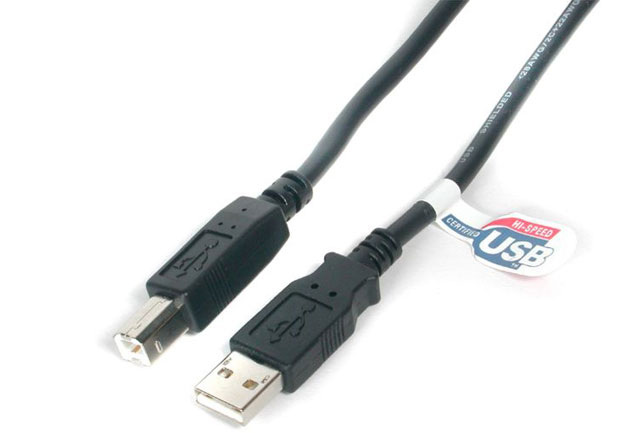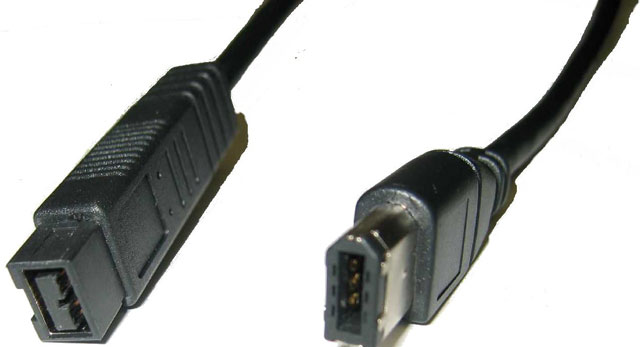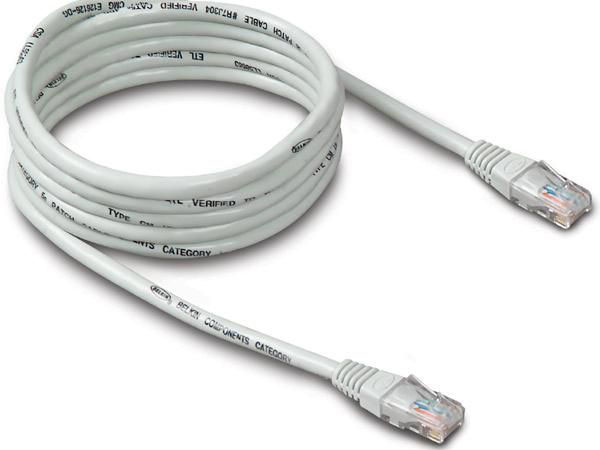Compare speed of connection standards
Your computer (including desktop and laptop) has many different types of connectors. These connections could be USB 2.0, USB 3.0, eSATA, Thunderbolt, Firewire and Ethernet all designed for devices at the present time. You wonder what connection has the biggest speed and which connection needs to be most noticeable when you buy a new device such as an external hard drive. Let's join the socialization point through characteristics as well as the speed of the above connected standards.
USB 2.0 standard

USB 2.0 connectivity standards become popular so you can connect multiple external devices and drives to computers running Windows and Mac at the same time. Although standard USB 3.0 connectivity is already in use, many computers and other devices are still manufactured with USB 2.0 connections. Devices like the iPod also do not use USB 3.0 standards but use Thunderbolt connection standards. This is explained by the USB 2.0 standard that meets all the tasks of the job as well as the many devices that do not require too fast speeds such as computer mouse and keyboard. The speed of standard USB 2.0 connection is 480Mbps (converting 1000Mbps to about 1Gbps).
USB 3.0 standard

USB 3.0 connectivity standard is the next generation of USB 2.0 standard, the speed of USB 3.0 standard increased about 10 times compared to USB 2.0 standard. Standard USB 3.0 connection with 5Gbps speed.
ESATA standard

ESATA standard stands for external SATA and SATA is a standard form of hard drive connection directly to a computer. Inside the desktop and laptop computer is the hard drive, in most cases the hard drive connects to the motherboard using standard SATA connection. With eSATA, an external hard drive can be used in the same way as the connection type and technology to connect to your computer. The internal hard drive is faster than a standard external hard drive using a USB 2.0 connection. The eSATA standard has speeds from 3Gbps and 6Gbps.
Thunderbolt standard

Thunderbolt is the latest connectivity standard in the connectivity standards mentioned in the article. The original code name of this standard is Light Peak . Thunderbolt is a technology originally developed by Intel but distributed for the first time to users by Apple. This connection standard helps increase the connection speed of Mac devices, making Apple one of the first companies to adopt the technology. Thunderbolt standards are more capable than other connections. Thunderbolt standard has 10Gbps speed for each exchange channel.
Firewire standard

The Firewire or IEEE 1394 standard is a standard " silent " connection for a while. However, USB and USB 2.0 standards slow down the popularity of the Firewire standard. The products are manufactured using more USB standards than the Firewire standard. Even so, Firewire 400 and 800 outperform older USB standards (the USB 3.0 standard is the exception). Firewire has speeds of 3Gbps (400) and 6Gbps (800).
Ethernet standard

The Ethernet standard is the primary connection standard for networking purposes, so it is not designed for speed itself. However, Ethernet standards can be used to transfer computer data. Ethernet has a speed of 100 Mbit / s.
With the above assessments, we can have a ranking of standards connecting with high to low speeds
1. Thunderbolt
2. USB 3.0
3. eSATA
4. Firewire
5. USB 2.0
6. Ethernet
Note: The above results are not necessarily correct in all cases, can depend and configure as well as other objective issues.
You should read it
- Standard 10Gb connection per second from Apple and Intel
- How to add an Ethernet port on a laptop
- Distinguish common types of computer cables
- The Mac may support both USB 3.0 and Thunderbolt
- Apple may have to switch to USB-C if it wants to sell in Europe
- How to install a hard drive?
- What will be after 10G Ethernet?
- Apple LED Cinema Display is equipped with Thunderbolt
May be interested
- Speed up Internet connection on Windows 10 computers
 internet acceleration helps to get rid of slow network connection. if you're using windows 10, please refer to the following ways to speed up internet connection.
internet acceleration helps to get rid of slow network connection. if you're using windows 10, please refer to the following ways to speed up internet connection. - See the speed and duration of iOS 12.3 battery with iOS 12.2, should the upgrade be done?
 youtube channel iapplebytes has conducted tests to compare the speed and battery life between ios 12.3 version and ios 12.2 when operating on iphone 5s, 6, 6s, 7 and iphone 8 to help users easily. decide whether to update your smartphone.
youtube channel iapplebytes has conducted tests to compare the speed and battery life between ios 12.3 version and ios 12.2 when operating on iphone 5s, 6, 6s, 7 and iphone 8 to help users easily. decide whether to update your smartphone. - The latest way to speed up Internet Connection 2022
 websites you visit take longer to load than they used to? is your download speed slower than it should be? there are many factors involved when it comes to your internet connection.
websites you visit take longer to load than they used to? is your download speed slower than it should be? there are many factors involved when it comes to your internet connection. - How to check the speed of the network card on Windows 10
 wondering about the connection speed of your network adapter (network adapter)? here are 4 ways to find out this information on windows 10.
wondering about the connection speed of your network adapter (network adapter)? here are 4 ways to find out this information on windows 10. - How to Speed Up Slow Internet Connection
 a slow internet connection wastes time, turns online video into a lousy slideshow of stills, and puts your computer at risk of being thrown out the window in a fit of anger. to speed up a slow internet connection, you should take the time to optimize your web browser, modem/router, internet service plan, and computer in general. by streamlining and speeding up each of these individual elements, you can dramatically improve overall connection speeds and protect your computer, and your sanity, from a given threat.
a slow internet connection wastes time, turns online video into a lousy slideshow of stills, and puts your computer at risk of being thrown out the window in a fit of anger. to speed up a slow internet connection, you should take the time to optimize your web browser, modem/router, internet service plan, and computer in general. by streamlining and speeding up each of these individual elements, you can dramatically improve overall connection speeds and protect your computer, and your sanity, from a given threat. - Compare Internet speed of DNS 1.1.1.1 with other popular DNS
 cloudflare announced the new dns service 1.1.1.1 on april fool's day (1/4). however, the service is real and the company claims it is the fastest dns service and privacy protection for users with a query speed that can be reached to a remarkable number, 14.01 ms.
cloudflare announced the new dns service 1.1.1.1 on april fool's day (1/4). however, the service is real and the company claims it is the fastest dns service and privacy protection for users with a query speed that can be reached to a remarkable number, 14.01 ms. - [Tips] Some tips to speed up the most effective WiFi connection
![[Tips] Some tips to speed up the most effective WiFi connection](https://tipsmake.com/img/no-image-80-80.png) how to speed up wifi connection effectively? share your wifi acceleration experience, how to set up a router or wifi modem for the best reception
how to speed up wifi connection effectively? share your wifi acceleration experience, how to set up a router or wifi modem for the best reception - Android RAM 10 GB smartphone lost to 4G iPhone Xs Max in speed test
 phonebuff youtube channel recently conducted an experiment to compare the application opening speed between iphone xs max 4 gb ram and oneplus 6t mclaren limited edition with 10 gb ram.
phonebuff youtube channel recently conducted an experiment to compare the application opening speed between iphone xs max 4 gb ram and oneplus 6t mclaren limited edition with 10 gb ram. - Top software to increase wifi speed, network speed
 slow internet speeds can cause disruptions when working, watching movies, or playing games. if you are looking for a solution to improve your network connection, the list of speed boosters below will help you browse the web faster and more stably.
slow internet speeds can cause disruptions when working, watching movies, or playing games. if you are looking for a solution to improve your network connection, the list of speed boosters below will help you browse the web faster and more stably. - Speed up Internet connection
 in this article, we introduce some simple but quite effective methods to speed up your internet connection.
in this article, we introduce some simple but quite effective methods to speed up your internet connection.






![[Tips] Some tips to speed up the most effective WiFi connection](https://tipsmake.com/data1/thumbs_80x80/[tips]-some-tips-to-speed-up-the-most-effective-wifi-connection_thumbs_80x80_bm4409sSm.jpg)



 Experience gold when choosing to buy an external hard drive
Experience gold when choosing to buy an external hard drive Distinguish real and fake goods when buying 'apple flaws'
Distinguish real and fake goods when buying 'apple flaws' Useful tips when choosing to buy LCD TVs
Useful tips when choosing to buy LCD TVs You choose a tablet or netbook?
You choose a tablet or netbook? Wondering when you want a thin TV
Wondering when you want a thin TV 5 cheapest 10-inch tablets in Vietnam
5 cheapest 10-inch tablets in Vietnam